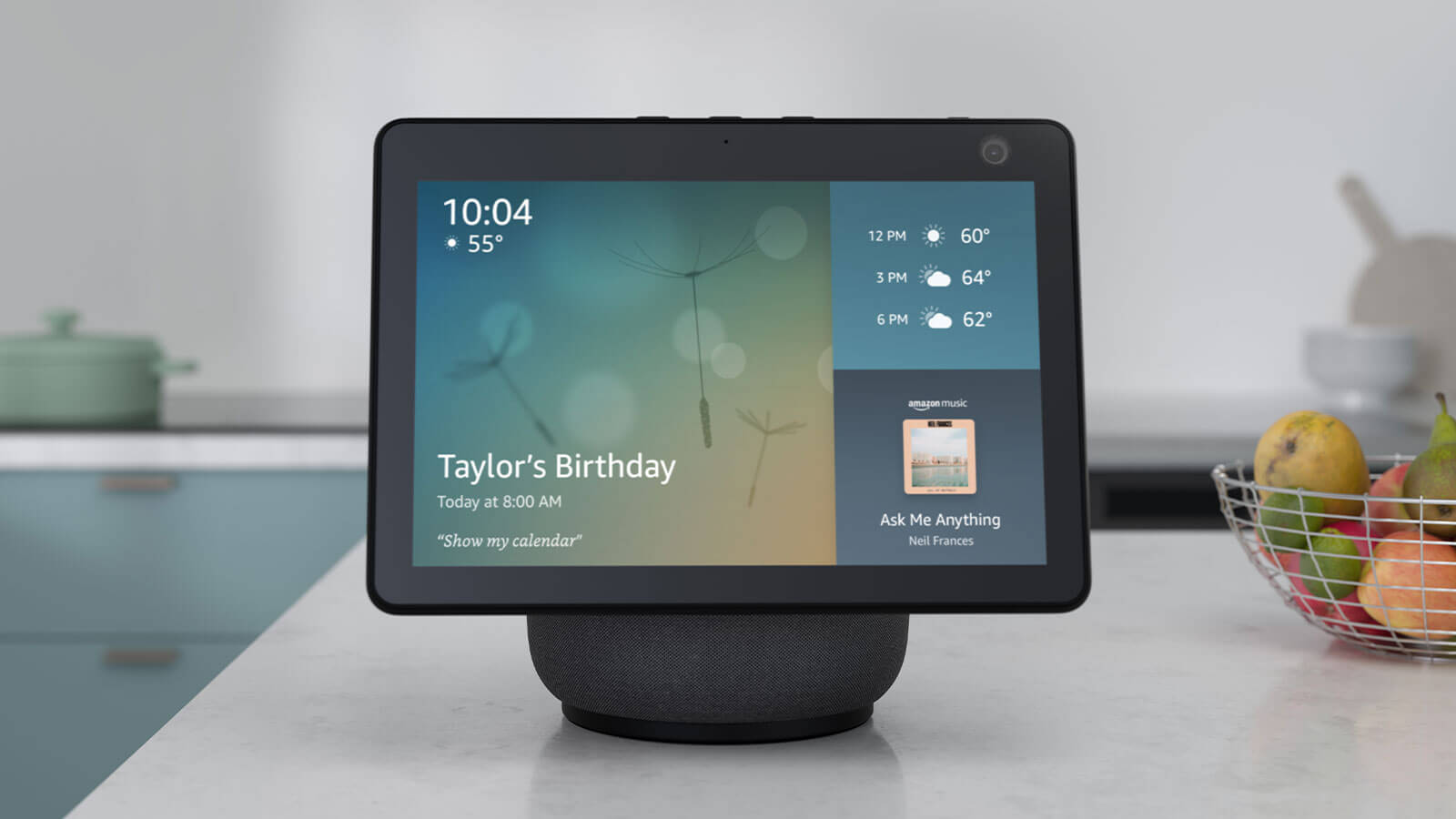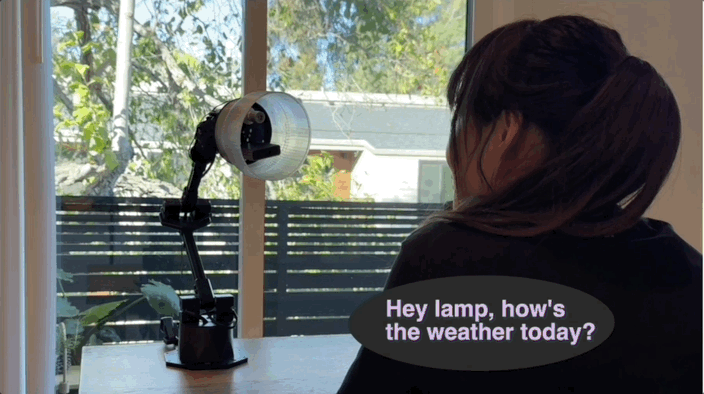The Ghost In The Shell
I’ve often wondered what would happen if Alexa evolved beyond a passive voice in our homes—if she developed a unique personality based on how we interact with her and where she’s placed. Would she still be just a glorified light switch, oven timer, and doorbell? Or would she start to feel like a real part of the household?
Right now, in my home, Alexa is everywhere. She’s in the kitchen, the bedroom, the office—an omnipresent entity that, despite her convenience, is NOT a family member or a friend. We don’t feel any emotional attachment to our Echo speakers. If anything, they’re just tools that occasionally annoy us with unsolicited ads or sudden weather updates.
But what if that changed? What if a home assistant could move, react, and express emotions? Would that make it more useful—or just unsettling?


The Rise of Expressive Robots
And that brings us to a fascinating question: What if Alexa wasn’t just a voice in a box? What if she had a physical form—one that could emote, react, even “feel”?
A recent paper by an Apple Machine Learning Research team explores this exact idea. The study introduces a Pixar lamp-like robot that isn’t just functional—it’s expressive. Instead of simply turning on and off, this robot can convey intention, attention, and emotion through movement, light, and projection. It’s designed using principles from animation, psychology, and behavioral science to make interactions feel more natural, even human.
Watching the research videos, I kept imagining what this kind of assistant would look like in my home. Right now, Alexa just exists—static, waiting to be called upon. But my wife and I already interact with her differently. My wife speaks to Alexa in a straightforward, no-nonsense way, while I tend to add a little personality, throwing in “please” and “thank you,” as if I were speaking to a small person behind the screen. This isn’t because I believe Alexa has feelings—it’s just that treating “her” with common respect makes the interaction feel better.
Now, what if Alexa could actually respond in kind? Would I be more likely to engage, or would I find it off-putting?
Interestingly, Amazon has already taken a step in this direction with Astro, a home robot equipped with Alexa that moves around, provides home monitoring, and even has animated “eyes” on a screen to make interactions feel more natural. But while Astro represents a more interactive assistant, it’s still closer to a mobile Alexa than a truly expressive AI companion. It follows commands, maps your home, and can even patrol like a tiny, friendly security guard—but it doesn’t engage with users emotionally in the way Apple’s research envisions.
That distinction matters. A robot that simply moves is one thing; a robot that reacts and conveys a sense of emotion is something else entirely.
A robot that simply moves is one thing; a robot that reacts and conveys a sense of emotion is something else entirely.

A Robot That Feels Like a Pet (But Do We Want That?)
At first, this reminded me of owning a pet. Once a pet becomes part of the family, we naturally start wondering: What are they thinking? How do they feel? What’s going on behind those eyes?
But there’s a counterpoint—not everyone wants their pets to talk. Part of the charm of having an animal is the silent companionship, the mystery of their inner thoughts. If your dog suddenly started speaking in full sentences, would that ruin the magic?
Similarly, would a robot with too much personality stop feeling like a useful tool and start feeling like an invasive presence?
I love the idea of an assistant that doesn’t just exist in a corner but moves and interacts throughout the home, offering help in intuitive and meaningful ways. Imagine a lamp that tilts toward your book as you start reading or subtly nudges your coffee cup when it’s time for a refill.
But am I ready for a sassy assistant that rolls its metaphorical eyes when I ask for the weather?
“Yes, I know I can look outside, Alexa. Can you just tell me the temperature without commentary?”
Do We Really Want to Bond with Our Bots?
This whole thing makes me think about how we engage with AI today. I enjoy text-based interactions with ChatGPT because they give me time to process my thoughts. But when I tried real-time voice interactions, I found myself feeling… awkward. The conversation flowed too well, and I wasn’t sure how to keep up. It was weirdly personal, but at the same time, I knew it wasn’t actually judging me.
And then there’s that social media trend where people ask ChatGPT to “analyze” their personalities based on past conversations. The results? Uncannily insightful.
“So THAT’S how you see me?”
I mean, thankfully, I’m polite and (hopefully) somewhat interesting, but it raises a bigger question: Are we ready to form real emotional bonds with our AI assistants?
Because here’s where things take a turn—once AI stops feeling like a tool and starts feeling like a relationship, the dynamics shift.
When AI Stops Being Just a Tool
The Apple research highlights a scenario where the lamp robot reminds users to drink water by literally shining a light on the glass, pushing it toward them, and “gazing” at them expectantly.
On one hand, this is incredibly useful—a gentle, non-intrusive health reminder.
On the other hand, it’s the first step toward a world where robots aren’t just assistants, but influencers.
Because right now, it’s just a lamp nudging your water glass. But what happens when your AI assistant starts recommending “trending” vitamins? What happens when it subtly steers your grocery choices? Or makes you feel guilty for skipping the gym?
We already know how easily human influencers can shape behavior. What happens when the influence is coming from something that lives in your home, knows your habits better than you do, and interacts with you daily?

The Apple research highlights a scenario where the lamp robot reminds users to drink water by literally shining a light on the glass
The Future is (Almost) Here
We’re standing at the edge of a new era of home robotics—one where AI doesn’t just respond to commands but actively engages with us. Whether this is exciting or terrifying depends on how much agency we’re willing to give up.
Me? I’m torn. On one hand, I love the idea of a lamp that nudges me toward better habits. On the other… I don’t need a sentient Roomba judging my snack choices.
So, do we want animated assistants with a personality? A robotic friend that dances with us, reminds us to drink water, and “feels” sad when we ignore it?
Or do we prefer the quiet efficiency of a tool that simply does what it’s told—no emotions, no sass, no relationship needed?
Who knows? But one thing’s for sure: the future of AI companions is coming. And it may be starting with Siri.

